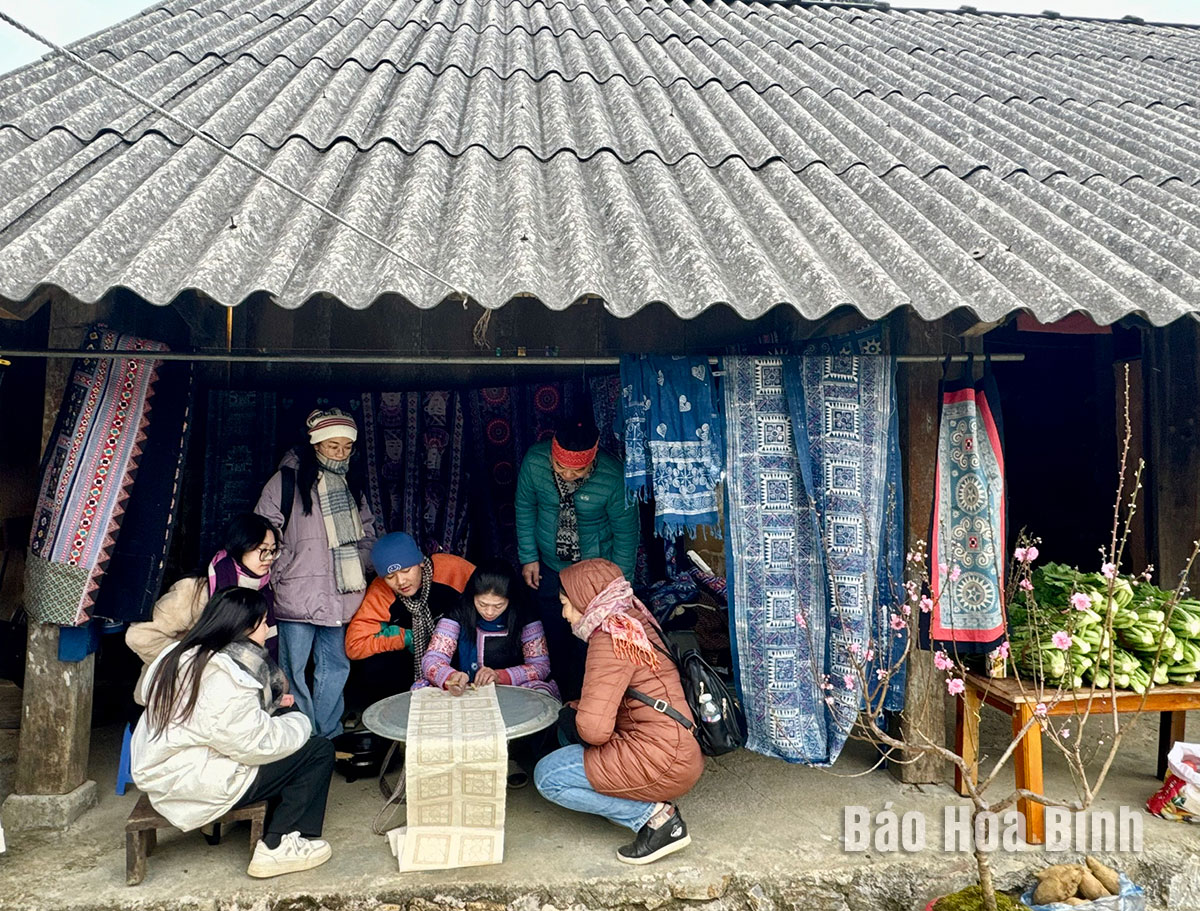



Tourists are learning about the traditional occupation of a Mong family in Pa Co hamlet 1, Pa Co commune (Mai Chau) during the traditional New Year.

Mong boys and girls and tourists are playing Pao throwing in Gau Tao Festival.
Decorating their houses, preparing food, pounding sticky rice cakes with Mong families on the afternoon of the 30th of Tet and the bustling moments on New Year's Eve are unforgettable experiences for visitors staying at A Pao Homestay. Mr. Phang A Pao, the owner of A Pao Homestay, says: During the traditional Tet holiday this year, the community accommodation in 2 communes has welcomed many groups of guests to stay. In addition, most of the local people prepare blankets, pillows, and mattresses to welcome guests who want to stay. Tet atmosphere is therefore more bustling and joyful.
According to Mong people's concept, the traditional Tet is a sacred time to thank the gods and ancestors for blessing the harvest, peace and health for the people. After the ceremony to worship the gods and ancestors in the morning of the first day of Tet, everyone happily prepares and wears beautiful clothes to visit each other's houses and wish each other a happy new year. The first meal of the new year is full of wine, meat and indispensable traditional Day cakes.
Ms. Vuong Phuong Giang, a tourist from Hanoi, shares: In the past 5 years, I have visited Hang Kia and Pa Co communes many times and this year I experienced welcoming the New Year with the people in the highlands. My feelings about Mong people’s New Year customs are that there are many interesting things and the people here are extremely hospitable. Through the rituals and customs, I understand more about the cultural values, beliefs and family affection of Mong ethnic people.
In Pa Co hamlet 1, there is a homestay with a strong Mong character that is very popular with international tourists and guests who love to learn about indigenous culture, that is A De Homestay. Tourists often stay for a week at the homestay, experiencing living in a wooden house, on the ground, and cooking with a wood stove. Ms. Yehudit (an Israeli tourist) shares: I really like the atmosphere of the traditional New Year of Mong ethnic people. The weather here is quite cold, but the spring scenery of peach and plum blossoms is very beautiful, everyone wears colorful traditional costumes. This is a good opportunity for us to have rich and complete experiences of the local culture.
In the Mong community accommodation space, visitors are free to experience celebrating Tet at local people's homes, visiting and wishing families a happy new year, or visiting traditional brocade weaving groups, exploring the night market to exchange Mong ethnic culture in Pa Co commune on Saturday nights. Mong Tet is also an opportunity for young couples to get to know each other. During Tet, young men and women prepare their best costumes, wear silver jewelry, and organize into groups to play pao throwing, tu lu hitting, etc. Visitors are also very excited to join in this experiential activity.
To celebrate the traditional Tet, Mong people in Hang Kia and Pa Co communes simultaneously hold Gau Tao festival with many unique cultural activities, such as cultural exchange and performance of the ethnic costumes of Hoa Binh province; Day cake pounding contest, folk games, etc. Through Tet of M9ong ethnic people and the unique traditional festival program, Hang Ka and Pa Co become cultural and tourist destinations with the special appeal. Domestic tourists and many foreign groups are excited to explore the natural beauty, the traditional cultural values and enjoy the atmosphere of celebrating Tet in the highlands in the cold weather, watching the sea of clouds, bathing in Bo Am hot spring, enjoying the culinary flavors of Mong ethnic people which are elaborately prepared with the specialties of corn alcohol, Meo apple alcohol, smoked pork, black chicken, local pigs and delicious fresh vegetables and fruits.